Dry closets on trains
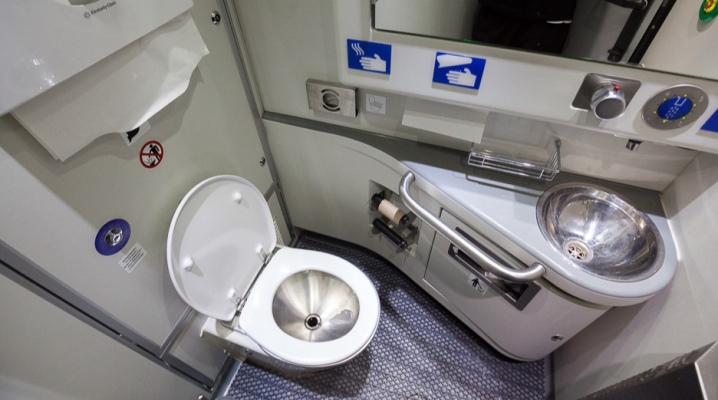
For many, travel by train has always been marred by the inconvenience they had to put up with. The toilets in the old cars were repulsive with their appearance and smell, discouraging the desire to spend more than a couple of hours on the road. But now this problem has been solved. Indeed, in addition to Wi-Fi and air conditioning, practical dry closets have appeared in modern carriages.

What is it and what does it look like?
The replacement of old equipment for new at Russian Railways began to be carried out in the last decade. Therefore, today dry closets on the train are no longer a novelty.
It is worth noting that they are really very comfortable. The design is a conventional toilet, in which all waste is recycled using a special technology. The toilet bowl is made of polystyrene, which greatly facilitates the care of such a device. Therefore, it is now easy to maintain order in this room.

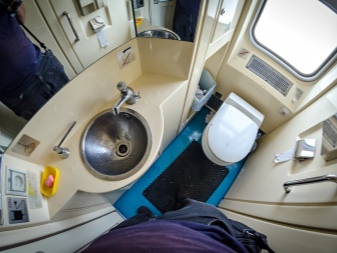
In the upper part of the toilet there is a small reservoir, into which a special liquid is poured, which activates the process of decomposition of feces into bio-substances. The toilet is usually covered with a lid. At the very bottom of the structure there is a container in which recycled waste is collected. Depending on the model of the dry closet, it can hold from 15 to 22 liters of solid waste.
The dry closet is arranged so that it can work autonomously, without a sewer system. Its principle of operation is to process feces into a homogeneous mass that is odorless.
Waste goes into special tanks, which, if necessary, are replaced with clean ones.
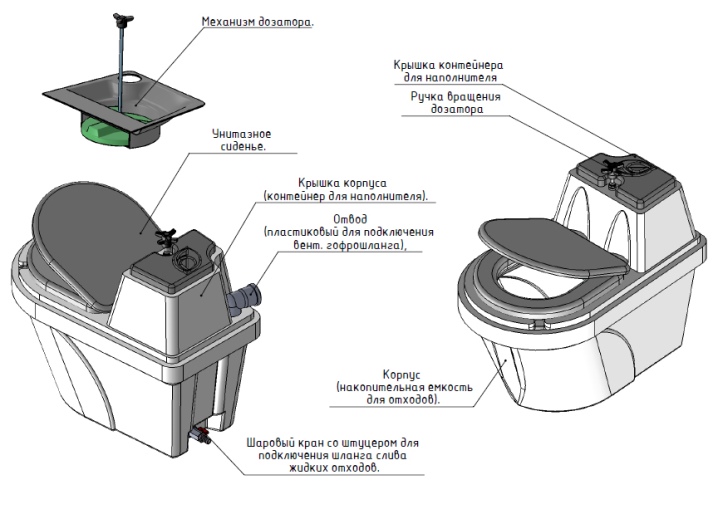
In addition to two toilet bowls and a common waste collection structure, the complete set of a modern toilet also includes:
- a pair of taps for washing;
- two pumps that are responsible for the timely supply of water;
- heating system, which is activated during the cold season;
- an electronic system responsible for the automation of all processes;
- system for creating a vacuum.
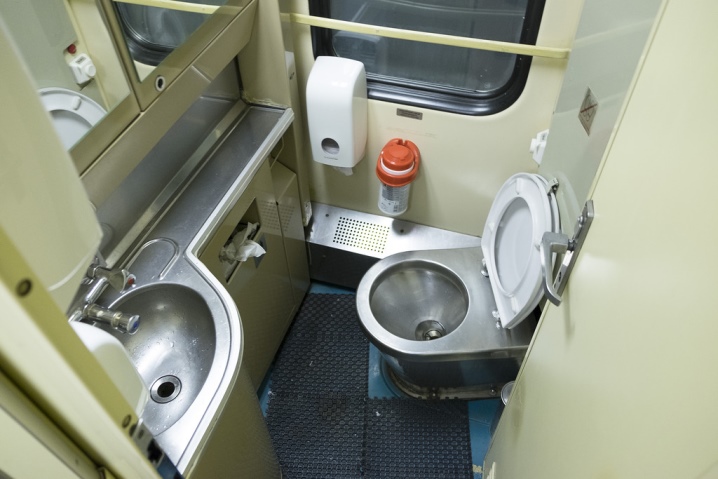
Two cabins with a toilet and a convenient washbasin can be located either side by side, at one end of the car, or separately, at opposite ends of the car.
It should be noted that the dry closet works even when the train stops, which is very convenient for passengers. After all, they do not need to run around the station in search of a toilet while the doors of the bathroom in the carriage are locked.
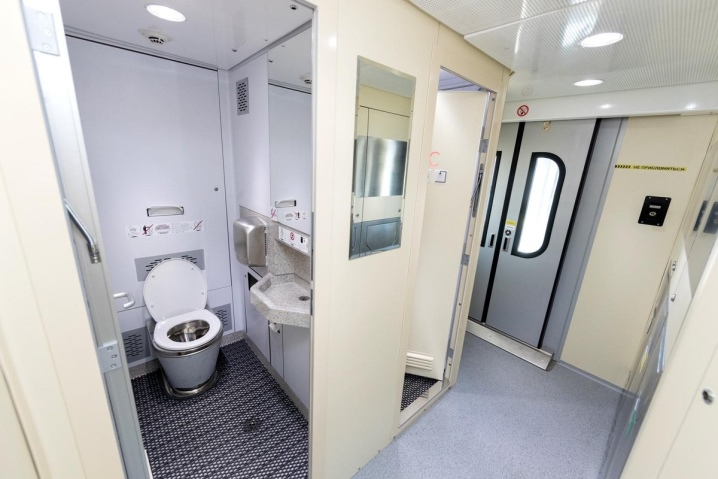
Interruptions in the work of such a toilet occur only when it is briefly closed for cleaning.
How do they differ from ordinary dry closets?
Many travelers who first encounter dry closets wonder how such designs on trains differ from those used in the country or in a country house. In fact, there is no difference.
Convenient mobile structures are used in trains, which are located in separate cars. They have many advantages:
- complete absence of unpleasant odors both in the toilet itself and in the carriage;
- ease of use, thanks to which even the elderly and children can use the new technology without problems;
- hygiene and lack of negative impact on the environment;
- ease of cleaning and cleanliness of the room;
- the presence of free space in the booth and the compactness of the design used;
- availability at any time, even when entering the city or stopping at a station.
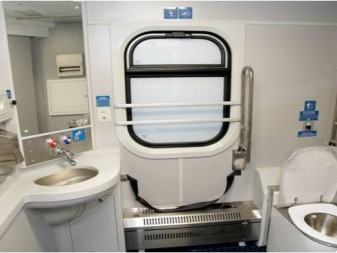

However, the dry closet still has several disadvantages. It is very easy to disable it, even tossing ordinary toilet paper inside. At the same time, only a specialist can cope with a breakdown, which is not very convenient, because there are too few such workers, and they are not always on the train. Therefore, because of one not very attentive passenger, the toilet has to be closed before arriving at the service station.
But this problem is also relevant for conventional toilets, which can become clogged if you throw used personal hygiene items there.
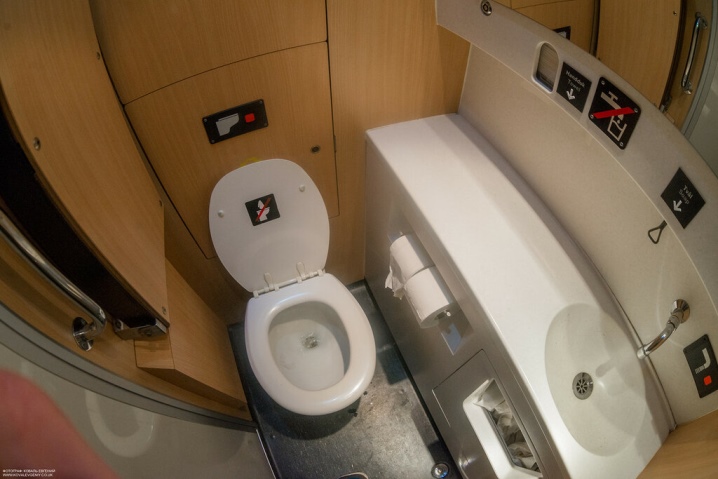
What are they?
From the very moment the trains appeared, there was a need to equip toilets in them. Initially, they were made the simplest. A toilet was installed, under which there was a special flap. After completing all the necessary procedures, it was necessary to press the pedal with your foot so that the flap opened, and all the contents of the toilet bowl fell out. It was inconvenient and very unhygienic.
Later, such structures in most trains were replaced by models with tanks, in which waste was accumulated until it stopped at a service station. These toilets also had a huge drawback - the tanks quickly filled up, and there was a terribly unpleasant smell around. Both problems were solved with the advent of modern dry closets. True, initially, due to the high price of the structure, they were used very rarely.
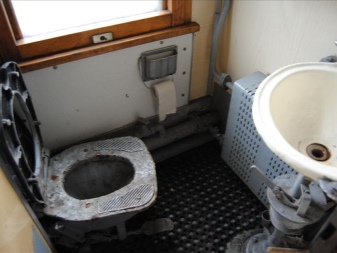
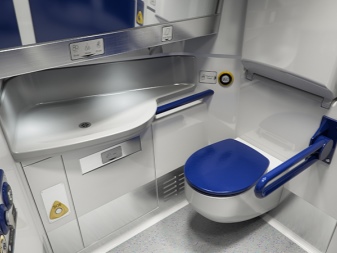
Nowadays, dry closets are installed not only in expensive first or business class carriages, but also in compartments and second-class carriages. The fact is that back in 2017, the FAS ordered Russian Railways to equip train carriages with modern dry closets. Now new cars without such toilets are not accepted for operation. True, the process of replacing old equipment with a more convenient new one is very slow, so there are different types of latrines on trains.
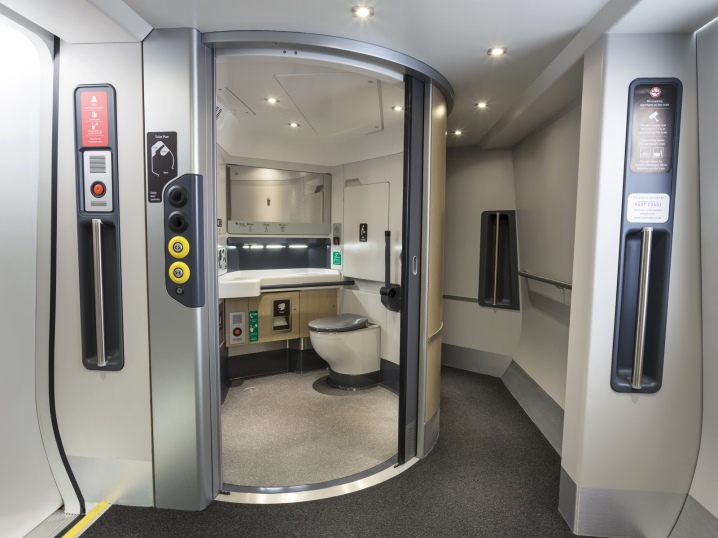
Determining the presence of a modern toilet is very simple. If the car was released recently, then you don't have to worry about it. All new trains are already equipped with comfortable toilets. In addition, you can view the information indicated on the ticket. Now the following cars are equipped with dry closets:
- luxury class, which include 1U, 1A, 1M and 1I;
- first class;
- business class (1B, 1E and 1E);
- enhanced comfort (designated as 2P, 2E and 2K);
- reserved seats (3P and 3E).
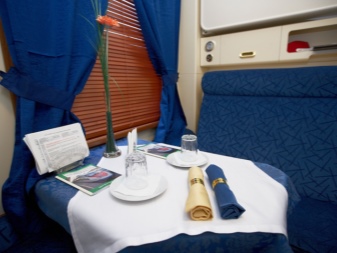
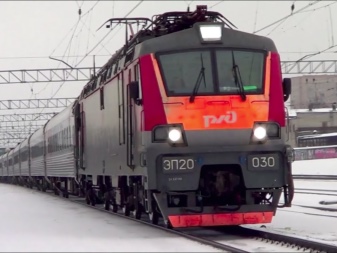
In the event that a compartment carriage is selected and the abbreviation 2U or 2B, as well as reserved seats marked 3T, 3E, 3D or 3R, you should ask the conductor about the presence of a dry closet in it.
If the traveler was unlucky and bought tickets for a carriage that is not equipped with a modern bathroom, he has every right to go to another carriage and use the dry closet there. You can also clarify where you can find the desired room with the conductor.
You can visually recognize such a bathroom by the fact that a green leaf is drawn above the standard WC inscription on the front door. You can also determine the presence of dry closets on the train by examining the train from the outside. So, cars with new bathrooms are now being made with oval windows on the vestibule door. Previously, they were always rectangular.
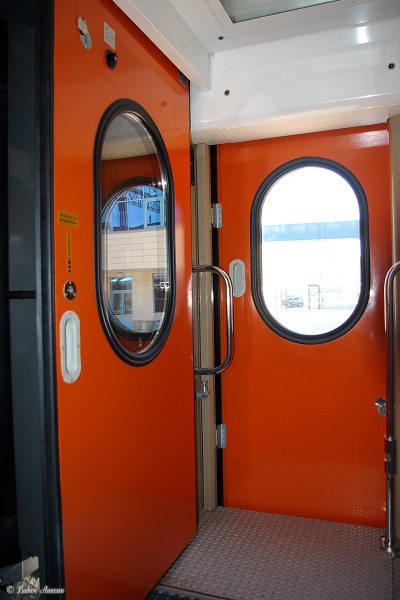
Separately, it should be said that modern dry closets are divided into peat and chemical ones. The latter are used in trains. Their difference lies in the fact that in such dry closets, feces are processed using special chemicals that dissolve in the liquid.
It is due to their effect that an unpleasant odor is neutralized and feces are liquefied. In addition, the reagents prevent the appearance of fungus, which allows you to keep the toilet clean without any problems. The advantage of such biological utilizers is also the fact that they work even at low temperatures.
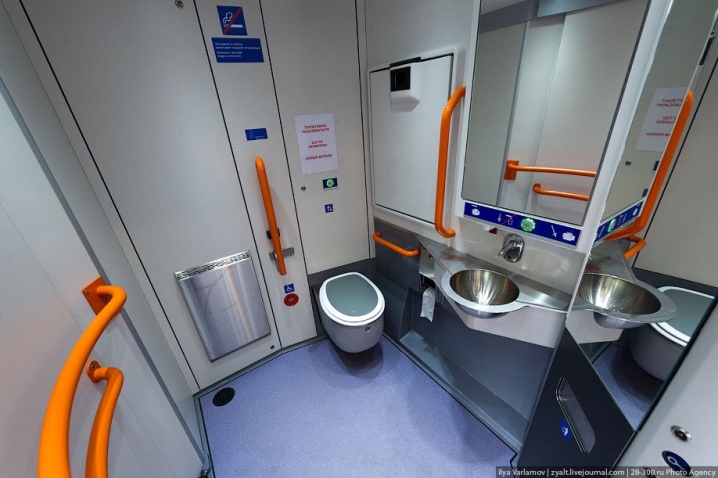
These devices use two fluid options. The first is poured into the tank located below. It is intended for waste splitting. The second is poured into the top of the tank. It is used to facilitate flushing and to completely eliminate unpleasant odors. To maintain cleanliness in the room, liquids should be regularly poured into tanks by railroad workers.
Newer models of such devices have an indicator that emits a sound signal when the waste tank is completely filled. This innovation makes it much easier to work with this type of toilets.
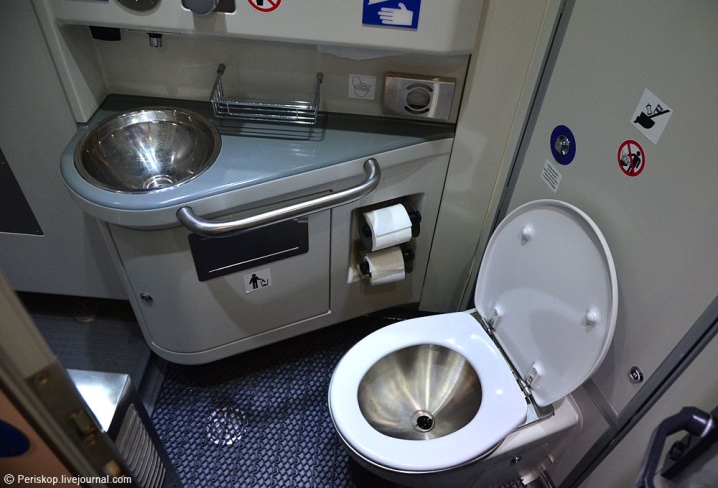
How to use?
A dry closet on a train is almost no different from a simple toilet. Therefore, it is very easy to use it, because all processes are automated as much as possible. But it is worth remembering that the flush button is not located on top, but on the side and is red or blue. Pressing it is accompanied by a loud sound, reminiscent of the sound of a starting engine.
For those who are not used to using a dry closet, there is an instruction in the booth.
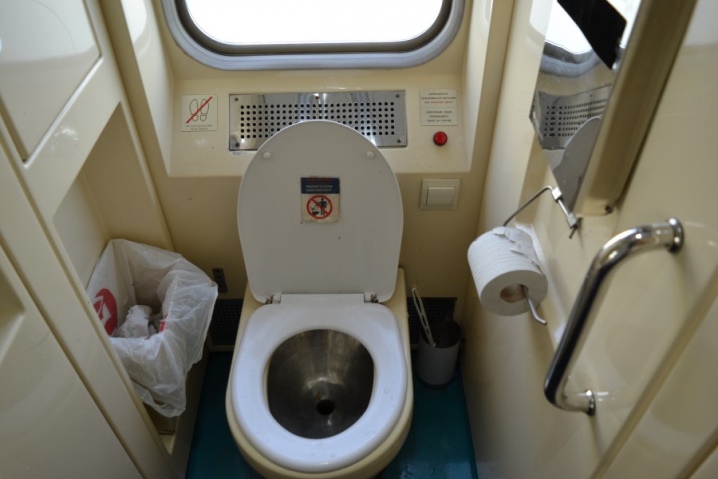
The main rule to remember when visiting a modern bathroom is that you are not allowed to throw used toilet paper into the toilet, as well as wet wipes or other hygiene items. For all this, a specially equipped container is placed in the booth, which must also be regularly cleaned.
The fact is that waste processing takes place under the influence of a special liquid that can only affect organic matter. At the same time, artificial materials remain intact, which leads to a failure in the system. It should be noted that if the toilet is clogged, you should not try to solve this problem on your own, because this can only aggravate the situation.
To avoid such unpleasant situations, more expensive and modernly equipped cars use paper made from a material that dissolves easily and does not leave waste behind. It can be thrown down the toilet as an exception.

After using the toilet, you can safely wash your hands in the neat modern sink. Hot water, however, is not always there, but this is not a big problem, especially in the summer.
Summing up, we can say that the advent of dry closets on trains made travel by rail more comfortable. Therefore, it is planned to equip all domestic trains in this way in the near future.
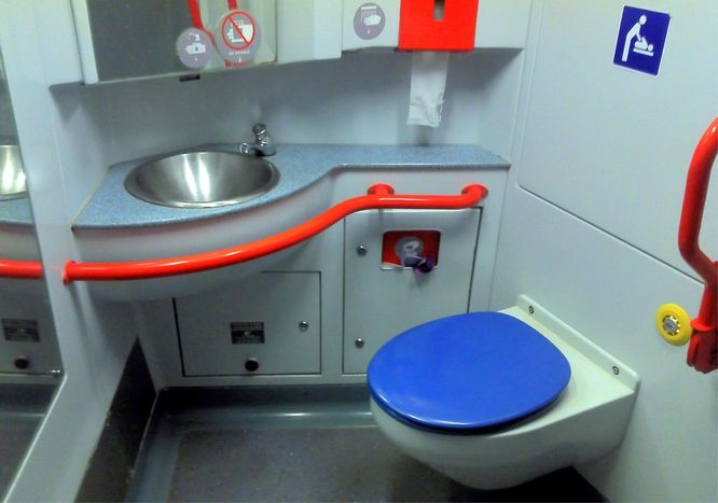













The comment was sent successfully.